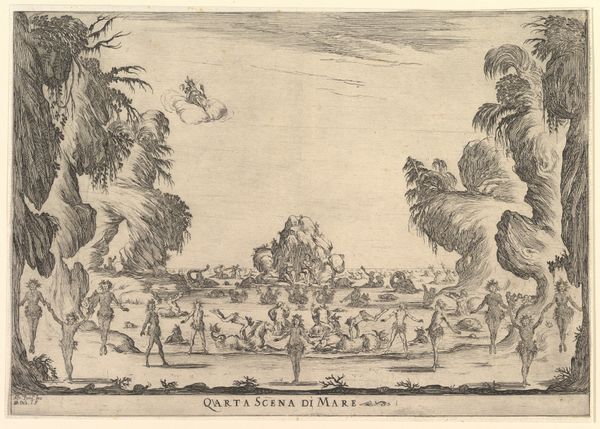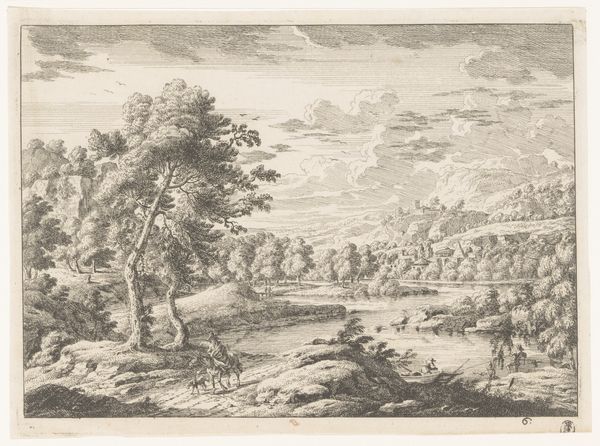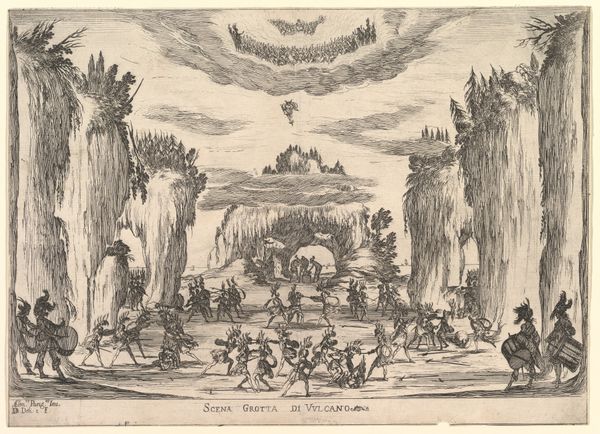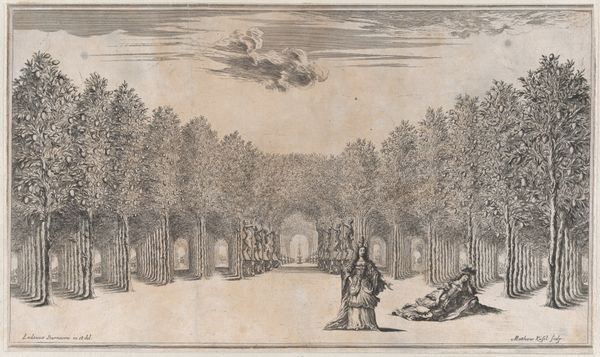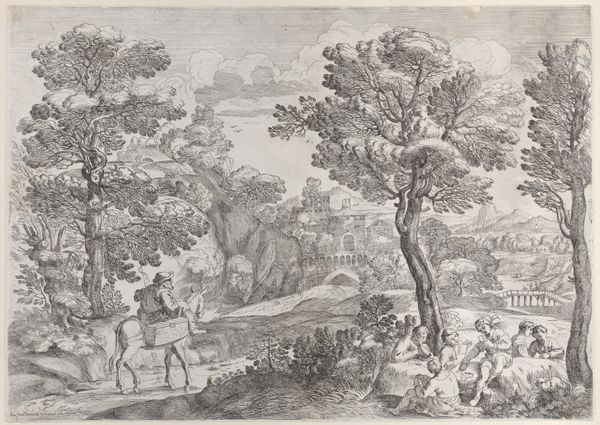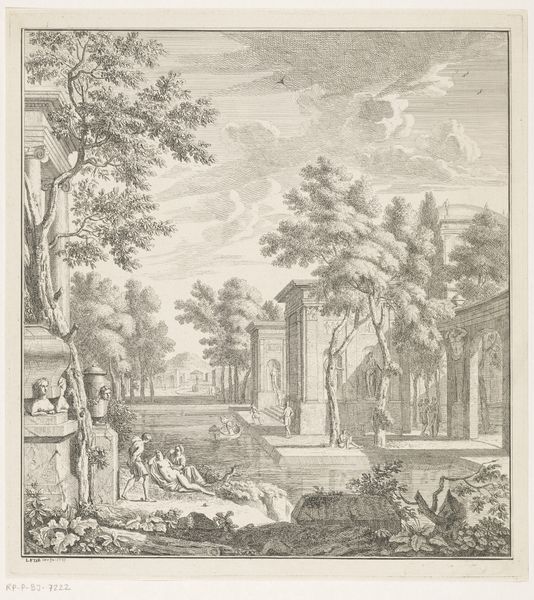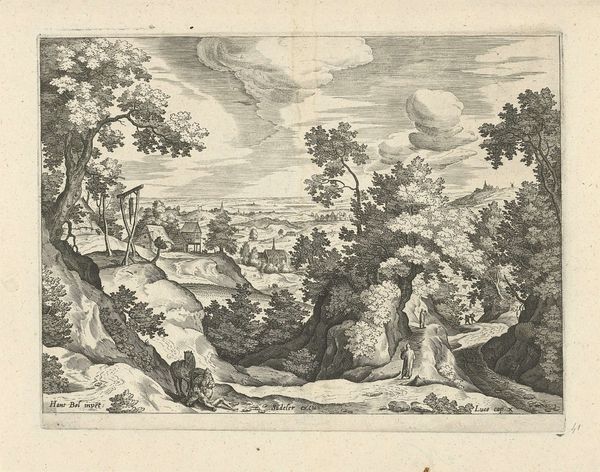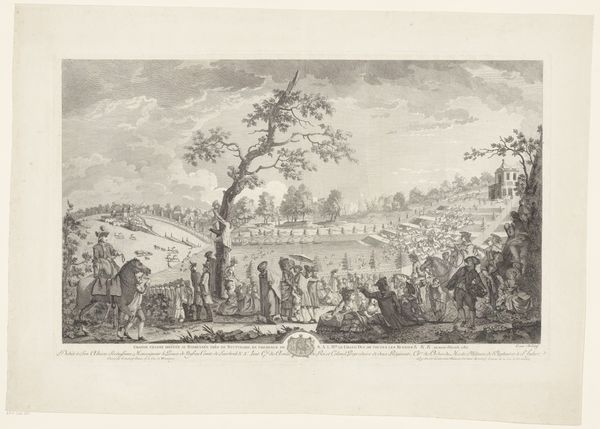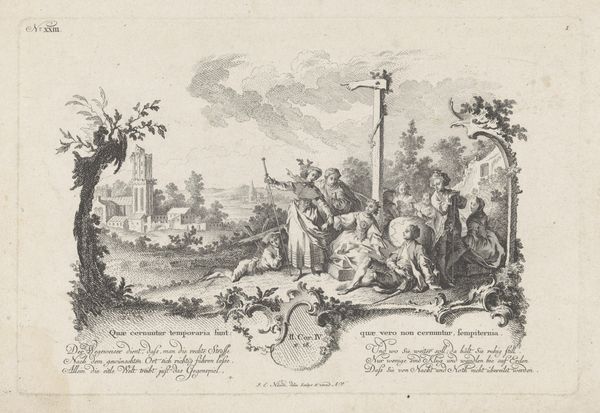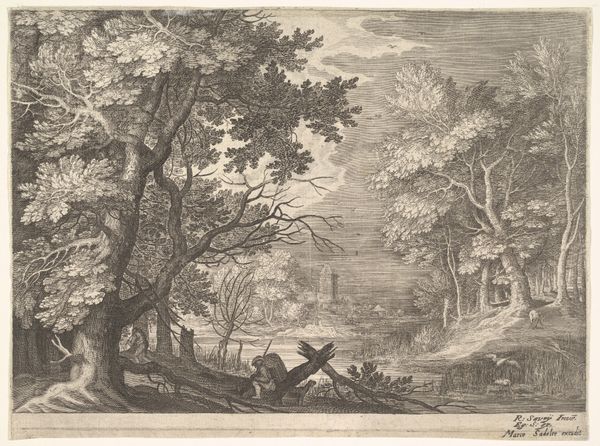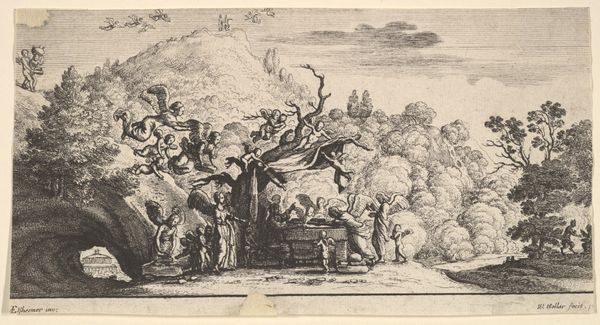
View of the scene in which is represented the Judgment of Paris (Prospettiva della scena in cui si rappresentò il Giuditio do Paride), from the series 'Seven Interludes' for the wedding celebration of Cosimo de' Medici in Florence, 1608 1608
0:00
0:00
drawing, print, etching, ink
#
drawing
#
allegory
#
baroque
# print
#
pen sketch
#
etching
#
landscape
#
ink
#
history-painting
Dimensions: Sheet: 7 5/8 × 10 7/8 in. (19.3 × 27.6 cm)
Copyright: Public Domain
Editor: This etching, "View of the scene in which is represented the Judgment of Paris," by Remigio Cantagallina, created in 1608, feels very theatrical. It's like a stage set design. What’s your take on its historical significance? Curator: It's fascinating because it documents a very specific, highly political event: the wedding celebration of Cosimo de' Medici. This print is one of a series commemorating the “Seven Interludes,” elaborate performances designed to showcase Medici power and wealth. Notice how the “Judgment of Paris” is staged, it’s not just about the mythological tale but about glorifying the Medici through allegory and spectacle. How do you think its staging reflects the period’s values? Editor: I guess they're really trying to highlight how cultured and refined the Medici family is by referencing classical stories. Like they’re saying, "We understand and appreciate this art, so we must be great leaders." Curator: Exactly. The print's function goes beyond mere documentation. It served to disseminate this image of the Medici as patrons of the arts and inheritors of classical virtues. Do you see how the composition—the perspective, the figures—contributes to this propaganda? Editor: It makes everything seem so grand, the figures are arranged almost symmetrically. It seems like they are trying to control nature. Were these performances common back then? Curator: Absolutely, but not everyone could stage something on this scale. That was part of the message, a display of seemingly unlimited resources and sophistication aimed to impress both local and foreign dignitaries. I hadn’t fully appreciated its use as political marketing until now. Editor: I didn't think an artwork made just for a wedding could tell us so much about power dynamics.
Comments
No comments
Be the first to comment and join the conversation on the ultimate creative platform.
